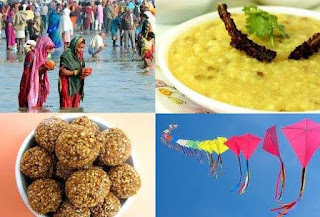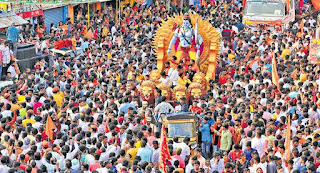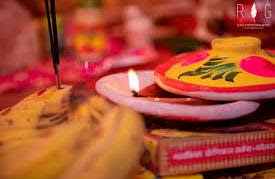Bihar culture and tradition
Bihar has a rich and diverse cultural heritage, influenced by Hinduism, Buddhism, Jainism, Sikhism, Islam, and Christianity. The state is known for its traditional art forms, including Madhubani and Mithila paintings, Manjusha Art, and various styles of painting used in the Mithila region.
Bihar tradition dress
Bihar is known for its traditional clothing that is both simple and elegant. The traditional dress for women is the Saree, which is draped around the body and worn with a blouse and petticoat. Men wear the Dhoti and Kurta, which is a long tunic worn over the Dhoti.Bihar famous food
Balushahi: Balushahi is a donut-shaped flaky pastry made of flour and ghee, deep fried in oil, and filled with sweet Khoya filling.
Kadhi Badi.
Chandrakala.
Chana Ghugni.
Mutton Kebabs.
Kesar Peda.
Dal Pitha.
Malpua.
Kadhi Badi.
Chandrakala.
Chana Ghugni.
Mutton Kebabs.
Kesar Peda.
Dal Pitha.
Malpua.
Bihar's most famous festival
Bihar's most famous and original festival is Chhath Puja, celebrated six days after Diwali. The festival is marked by devotion, fasting, and the distribution of sweets and fruits. The Puja is concluded with a holy dip in the Ganges river on the final day.Hindu festivals celebrated in Bihar include Chhath Puja, Diwali, Holi, Makar Sankranti, Durga Puja, Saraswati Puja, and Ram Navami, among others. Each festival holds significant cultural and religious importance, enriching the cultural tapestry of Bihar.
Makar Sankranti
This special festival signifies the conclusion of winter and the arrival of a fresh harvest season. In Hinduism, Makar Sankranti is a day devoted to honoring the Sun God. It is regarded as a propitious occasion due to its astrological importance. Makar Sankranti is a popular festival celebrated in many parts of India.
Ram Navami
Diwali 🪔
People bathe early in the morning and observe a fast, which is broken only after sunset with sweetmeals, puri and other delicacies. The day before Diwali is celebrated as Choti Diwali or 'small Diwali'. It is Diwali on a smaller scale, with fewer lights lit and fewer crackers burst.
Teej
The festival commemorates Parvati's unwavering dedication to her husband. When Indian women look for her blessings during Teej, they do so as a means of achieving a strong marriage — and quality husband. Not only does Teej center around a strong marriage, but it also focuses on the happiness and health of children.
Vasant Ram Navami is a Hindu festival which celebrates the birth of lord Rama, Maryada Purushottam who is considered as the 7th Avatar of Lord Vishnu. It is believed that on this day Shri Ram was born in Ayodhya nagari near the Saryu river.
Bihar tradition Dance
Jhijhiya is a famous folk dance of Bihar and is performed in the mythological town of Mithila. This dance is performed by women only. The whole Navaratri 'nine nights' festival is celebrated to worship the three forms of Lord Lakshmi, Parvati, and Saraswati.
Bihar educational place
Dates back, Bihar was used to be recognized as the godfather of education in India. Bihar is crowned with the honor of holding two major universities Nalanda University and Vikramshila University on its land. Among the Bihar universities, the Patna University is one of the oldest University of India.
Ancient times nalanda University and vikramshila University
Bihar tradition song
One of the most famous types of folk music is Sohar in Bihar. This form of music is related to the daily life of the people, just as the childbirth in any family.
Religiosity is the pivot around which the music and amusements of the village folk of Bihar revolve. There are songs like sohar - performed during childbirth, sumangali - associated with wedding, ropnigeet - performed during the season of sowing paddy, katnigeet - performed during the paddy harvesting season.
Bihar marriage tradition
Bihar, a culturally rich state in India, has vibrant and intricate marriage traditions that reflect its deep-rooted heritage.
Pre-Wedding Rituals
1.Satya Narayan Katha: This auspicious ceremony is performed to seek blessings from Lord Vishnu for a harmonious and prosperous marriage.
2.Tilak: The groom’s family visits the bride’s home, bringing gifts and blessings, symbolizing the acceptance of the bride into their family.
3.Haldi and Mehendi: Both the bride and groom are smeared with turmeric paste in their respective homes. This is believed to purify and bless them.
3.Mehendi (henna) is applied to the bride's hands and feet in intricate designs.
Wedding Day Rituals
1.Jaimala: The couple exchanges garlands, signifying their acceptance of each other.
2.Kanyadaan: The bride’s father formally gives away his daughter to the groom, entrusting her well-being to him.
3.Pheras: The couple takes seven sacred vows around the holy fire, each vow signifying a promise they make to each other.
Post-Wedding Rituals
1.Vidaai: This emotional farewell marks the bride’s departure from her parental home to her new home with the groom.
2.Griha Pravesh: Upon arrival at the groom’s home, the bride is welcomed with an aarti (prayer) and steps into her new life by tipping over a pot of rice at the entrance, symbolizing prosperity.
These traditions are not only religious ceremonies but also embody the social and cultural values of Bihar, reinforcing familial bonds and community ties.
Buddhist Monuments: Iconic sites like Bodh Gaya, Nalanda, and Vikramshila showcase Bihar's role in Buddhist learning and spirituality. Hindu Temples: From the Vishnupad Temple in Gaya to the Mundeshwari Temple in Kaimur, Bihar boasts ancient temples reflecting Hindu architectural splendor.
conclusion
The main culture of Bihar is a blend of various religious and cultural influences, including Hinduism, Buddhism, Jainism, Sikhism, Islam, and Christianity. The state's cultural life comprises art, dance, music, festivals, and fairs, reflecting the diverse traditions and beliefs of its people.




























Comments
Post a Comment